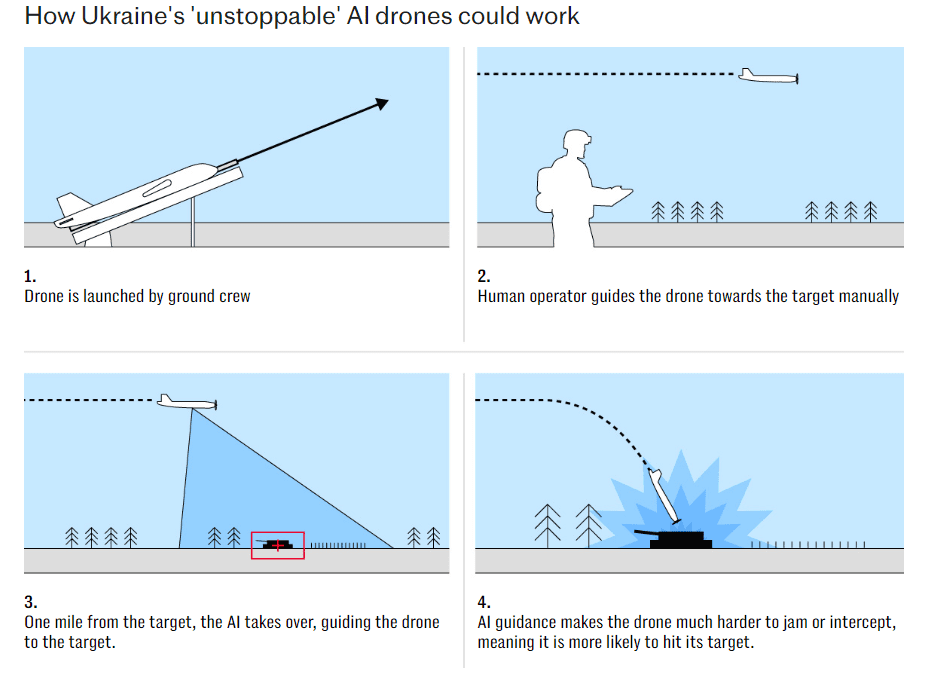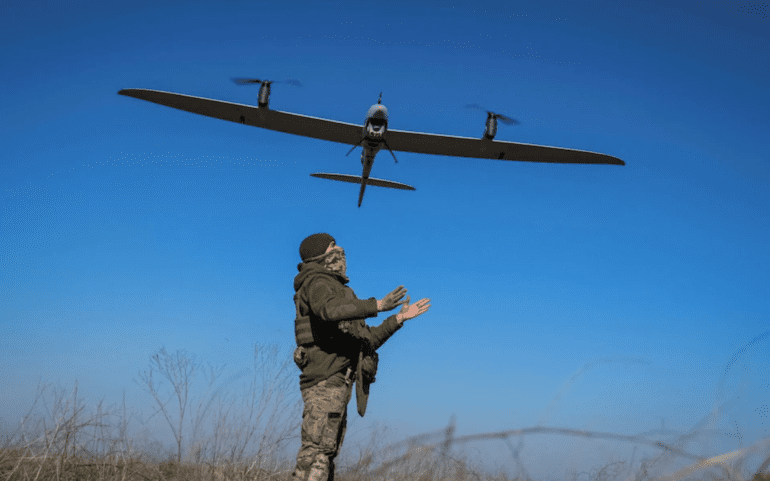- Ukraine, with Western backing, is developing AI-powered drones for enhanced military capabilities.
- The initiative aims to create drones with autonomous targeting systems to counter Russian defenses.
- Over £200 million in funding from a UK-led coalition is supporting the project.
- The drones will transition to autonomous mode near their targets, reducing susceptibility to electronic interference.
- Ukraine is committed to joint ventures for the rapid development of advanced weaponry.
Main AI News:
The development of artificially intelligent drones in Ukraine, supported by Western backing, is poised to revolutionize the landscape of modern warfare. Led by Ukraine’s Deputy Defence Minister Kateryna Chernohorenko, this initiative aims to create drones equipped with sophisticated image recognition targeting systems. These systems will enhance autonomy, making the drones less vulnerable to Russian countermeasures, thereby ensuring greater operational effectiveness.
This groundbreaking project, backed by over £200 million in Western financing from a UK-led drone coalition, signifies a significant stride towards leveraging advanced technology in military operations. Chernohorenko emphasized the importance of developing drones capable of autonomous operation, particularly in the face of escalating electronic warfare capabilities deployed by adversaries.
“The great challenge is the last mile of engagement taking into account that more and more individual electronic warfare systems are available,” stated Ms. Chernohorenko. “Our drones should be more effective and should be guided towards the target without any operators. It should be based on visual navigation. We also call it ‘last-mile targeting,’ homing in according to the image.“
By integrating AI into drone systems, Ukraine aims to enhance its operational range and resilience against electronic interference. The drones will transition to autonomous mode upon reaching a designated distance from their target, effectively reducing reliance on human operators and mitigating risks associated with electronic jamming.
Furthermore, a significant portion of the funding raised through the drone capability coalition is earmarked for the production of next-generation combat drones. This underscores Ukraine’s commitment to advancing its military capabilities and strengthening its position amidst evolving geopolitical challenges.
Despite controversies surrounding Ukraine’s drone program, including condemnation from the United States over deep strikes on Russian territory, Western support remains steadfast. The United Kingdom, alongside other coalition members, continues to provide vital assistance to Ukraine, including the supply of thousands of drones.
In light of the urgent need to bolster Ukraine’s defense capabilities amid ongoing hostilities, joint ventures, and technological collaborations are being pursued to expedite the development and deployment of advanced weaponry. As Chernohorenko affirmed, “We understand the joint ventures are quite a long way [away], and it’s not a fast way, but we want to move in this direction to have joint ventures, to prove we’re fast and can produce technological weapons.“
The integration of AI-powered drones represents a paradigm shift in modern warfare, offering strategic advantages and enhancing the effectiveness of military operations. With Western support and relentless innovation, Ukraine is poised to redefine the battlefield and safeguard its sovereignty in an increasingly complex geopolitical landscape.

Source: TELEGRAPH MEDIA GROUP LIMITED
Conclusion:
The development of AI-powered attack drones by Ukraine, supported by substantial Western financing and expertise, signifies a significant advancement in military technology. This initiative not only enhances Ukraine’s defense capabilities but also sets a new standard in modern warfare. As the market witnesses the evolution of drone technology, stakeholders must adapt to the changing landscape, leveraging innovation and strategic partnerships to maintain competitive advantage.

